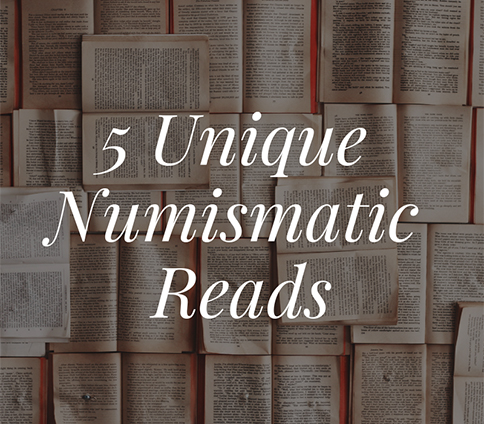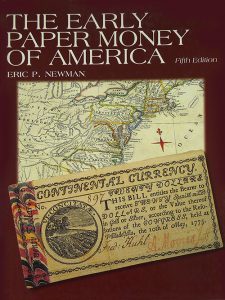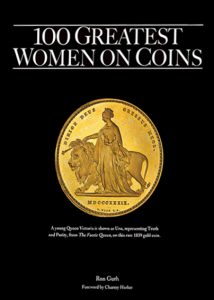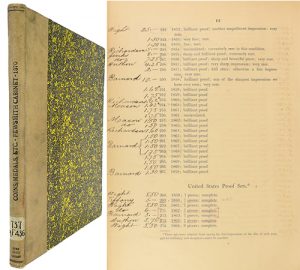
By Antoinette Rahn
As much as things change, there are always some things that remain the same. Coins/notes and literature are among items that seem to be timeless, and even in the present they often borrow from the past.
Perhaps that’s why the world of numismatics turns to literature for informing, inspiring, and in a way, uniting collectors. For example, have you heard the phrase ‘before you buy the coin, buy the book?’ This philosophy can be useful in reference to your own collecting or that of important people in your life. If, as they say, knowledge is power, then sharing opportunities to gain knowledge must certainly be some significant form of power as well.
With that, we spent some time considering opportunities for showing appreciation for others and sharing knowledge through the fusion of coins/notes and literature. Our consideration brought us to Kolbe & Fanning Numismatic Booksellers for unique access to the past and present of numismatic literature.
Here are five fascinating numismatic reads suitable for gift giving – to yourself or others…

1. “The Coin Collector,” by W. Carew Hazlitt. (8vo, 1905, second edition, 304 pages, 12 plates, green cloth, Edinburgh: John Grant.
We could say this list is in no particular order, but that might be stretching the truth a bit. The moment we saw this book and then further located information about its contents we were hooked. This book was published 113 years ago, and yet, the relevance of the statement made by the author in the first paragraph of the first chapter (Collectors and Collections) is applicable today.
Hazlitt writes “The formation of Collections of Coins originated, not in the Numismatist, but in the Hoarder. Individuals, from early stage in the history of coined money, laid pieces aside, as (nearer to our day) Samuel Pepys did, because they were striking or novel, or secreted them in the ground, like Pepys, because they were thought to be insecure. The former habit may be considered the gem of the coin-cabinet, as we know it; the latter accounts for those Finds which in modern times have enriched and advanced numismatic science to do prodigious and unlooked for an extent.”

2. “The Early Paper Money of America,” by Eric P. Newman (4to, 2008, fifth edition, 495 pages, illustrated in color and black and white, Iola: Krause Publications)
There’s a lot to like about this book, but truth be told, part of the appeal for me is the brilliant man behind the writing. The late Mr. Eric P. Newman was among the ‘rock stars’ of the numismatic world. His intelligence, exceptional ability to dissect and discover facts within history, respect and appreciation for collaboration and incomparable skills of writing and communicating what he had learned and discovered is what has fueled the evolution of many numismatist’s interests.
Not many people can say their collecting interest spanned nearly a century, but Mr. Newman could. Beginning with the gift of a copper-nickel Indian Head cent given to him at the age of seven from his grandfather, his 106 years of life included a series of accomplishments with numismatics often at the center. This book is a wonderful example of how a lifetime appreciation for collecting, learning about, acquiring, and sharing information about coins and notes can and does make a difference.

3. “100 Greatest Women on Coins,” by Ron Guth (4to, 2015, 119 pages, original pictorial boards, Atlanta: Whitman)
This reference is a study of the various women who’ve been depicted on coins through the generations. In all, more than 700 women were reviewed and considered for inclusion in this book. Ultimately the select 100 were determined and ranked by members of the Women in Numismatics organization, as well as other revered members of the hobby.
We think author Ron Guth summed it up quite well when he wrote, “This is a book about mothers, daughters, sisters, wives, empresses, queens, ballerinas, athletes, goddesses, regents, allegorical figures, and the many forms in which women have appeared on coins. It’s the story of women who have made important contributions to history, politics, the arts, the sciences, and myriad other fields.”

4. “A View of the Coinage of Scotland,” by John Lindsay. (4to, 1845, 291 pages, 18 lithographic plates, Cork, Ireland: Messrs. Bolster)
This early reference is as much history as it is a collector reference. The details with which Mr. Lindsay describes the obverse and reverse design of coins paint an intriguing picture not only of the coin but the history it reflects. Plus, the organization of the first part of the book by the coins of each Scottish king creates a great chronological exploration of these coins.
I believe this statement from the introduction of this book speaks to why this book is an interesting read.
“In treating the ancient coinage of any country, one of the most important difficulties is to ascertain from what point to commence, and this observation is particularly true as regards Scotland, whose early coinage as well as her history, is involved in great obscurity, and whose territories were at different times so mixed up with those of other kingdoms, as to render it doubtful in some instances, to what certain countries should be attributed.”

5. “The Fewsmith Cabinet, A Collection of Interesting and Valuable Silver and Copper Coins, Medals, Etc.,” (4to, 1870, 102 pages, modern tan linen, and mottled boards, original gilt-printed wraps bound in, New York: Mason & Co.
It’s not a given, but when you come across items with ‘titles’ of more than 12 words, you can often start to consider you’re looking at a relic. In the case of this catalog, the title presented above is a portion. In it’s entirety the title is “The Fewsmith Cabinet, A Collection of Interesting and Valuable Silver and Copper Coins, Medals, Etc., Embracing a Fine Assortment of Foreign and American Pieces, Also, A Choice Line of Colonials, Washingtons, Pattern Pieces, Politicals, Store Cards, Tokens, &C., In Various Metals, Formerly the Property of WM. Fewsmith, A..”
I can only imagine what the authors and publishers of this catalog would think about our current form of communication that is driven by 160 characters or less. However, numismatic folks are an innovative lot, and I’m certain they’d adapt beautifully.
In any event, sale/auction catalogs in the collecting world are a treasure in of themselves. It’s part of the reason why companies with robust and cutting-edge websites also offer beautifully illustrated catalogs. They are collectible, but as many know they are also a tremendous resource – a wealth of identifying details and historical information about coins and notes.
This catalog represents the Oct. 4, 1870 sale of the collection of WM. Fewsmith, A.M. As the title suggests the collection or cabinet, was diverse and extensive, in fact, there were 2,501 lots presented. An element of this catalog that is particularly interesting is that the price each lot commanded is noted in handwritten pencil. In addition, the handwritten notations include names of what I surmise may be some of the leaders in early numismatics within the U.S. Could the name Appleton refer to William Sumner Appleton, a 19th-century financier, attorney, author and numismatic collector and scholar? Or, could the name Mason that appears beside several lots in the catalog be that of Eben or Ned (Ebenezer) Locke Mason, Jr. whose contributions spread far and wide, most notably as a researcher, as the first dealer who also published a monthly magazine for the hobby (Mason’s Coin and Stamp Collector’s Magazine), and was one of America’s renowned authorities of numismatics? I’m not certain if that is what the notations are referencing, but the timing of the auction seems to parallel when both of these men were active in the hobby.
While I can think of more than one nun from my grade school years that would most certainly chastise anyone for writing in books, in this case, it is a most unique and special addition.
In conclusion, although numismatics and literature may not be the first thing that comes to mind when considering great collaborations, as these five great reads demonstrate, it is without a doubt an incomparable union.












